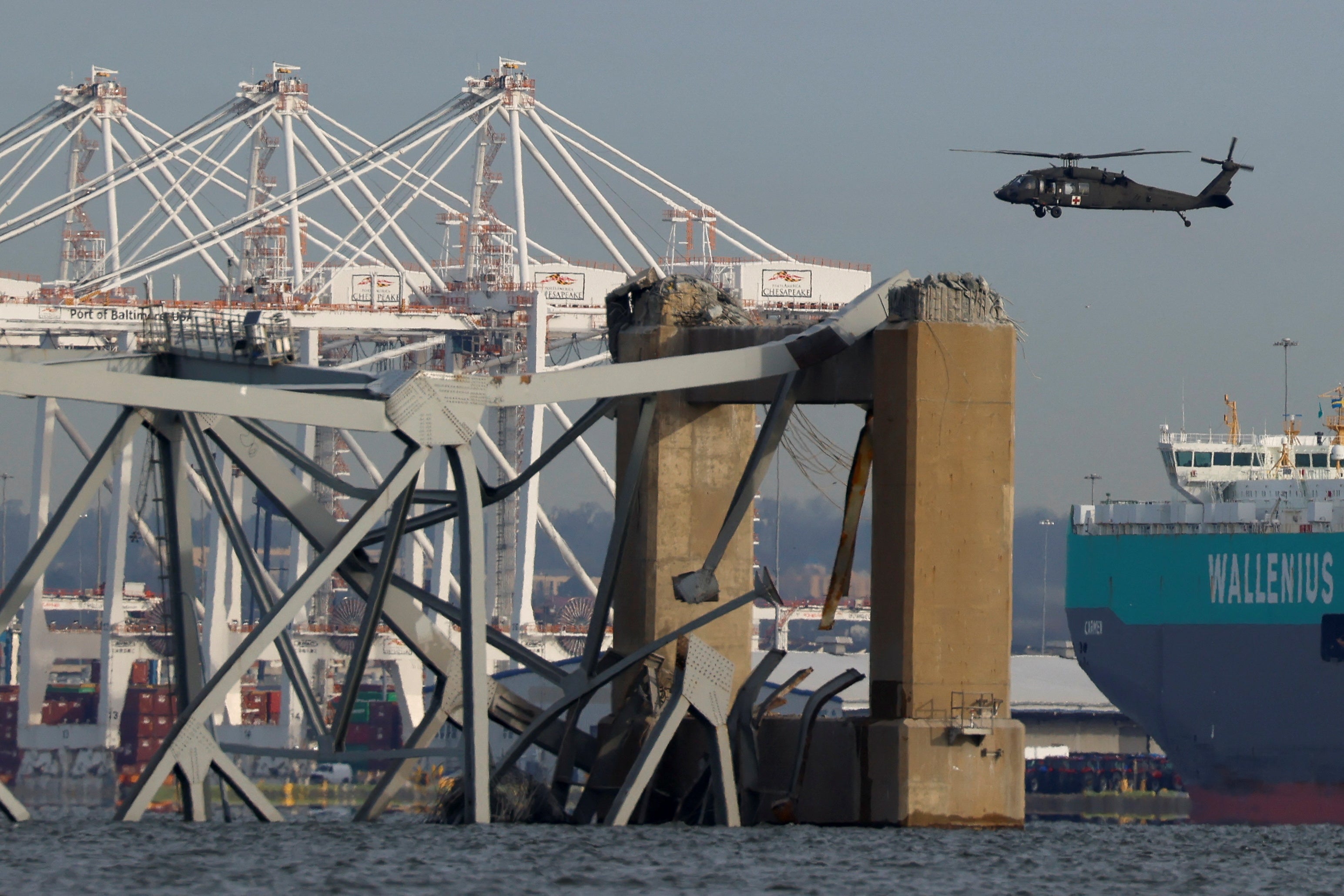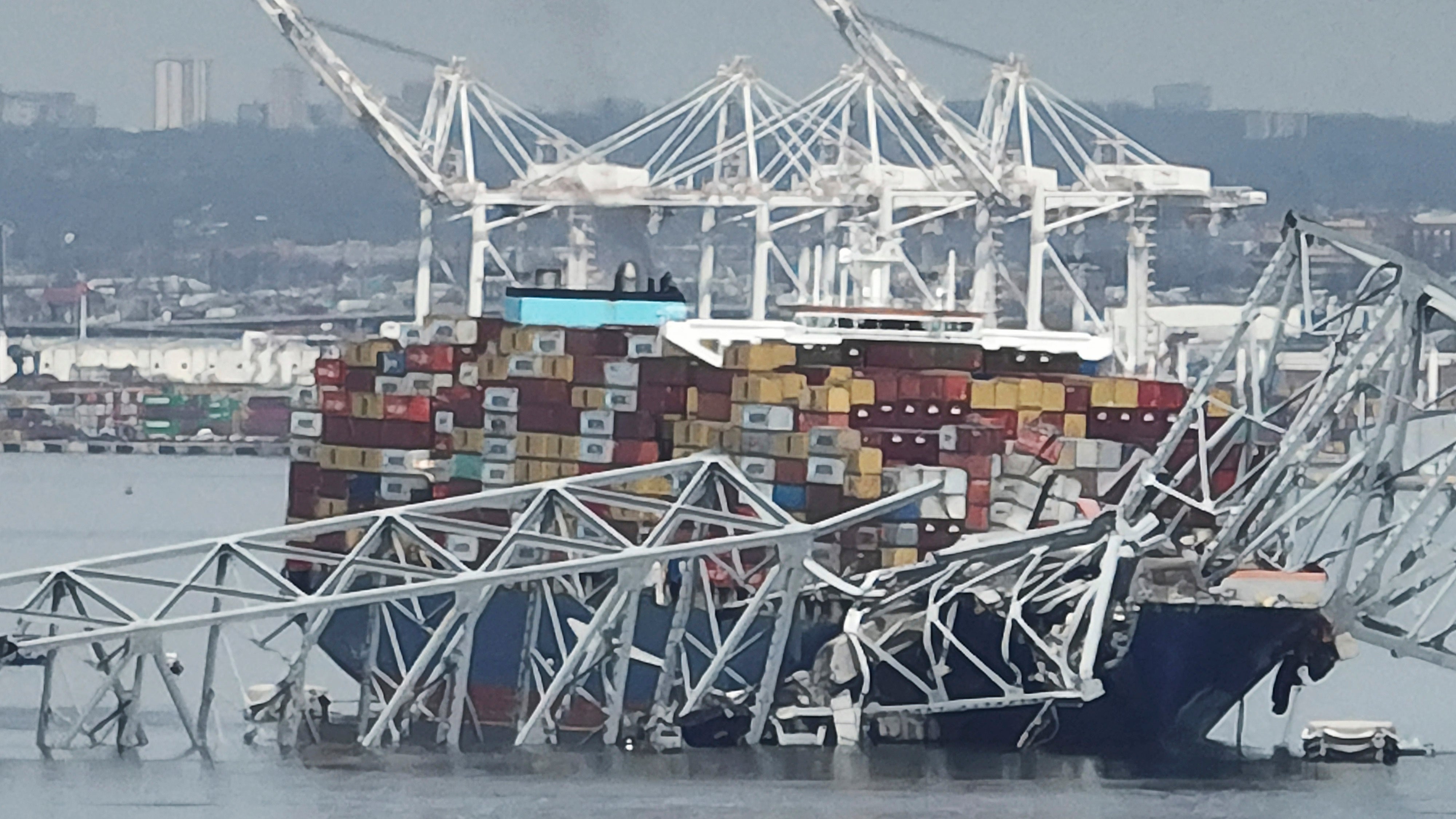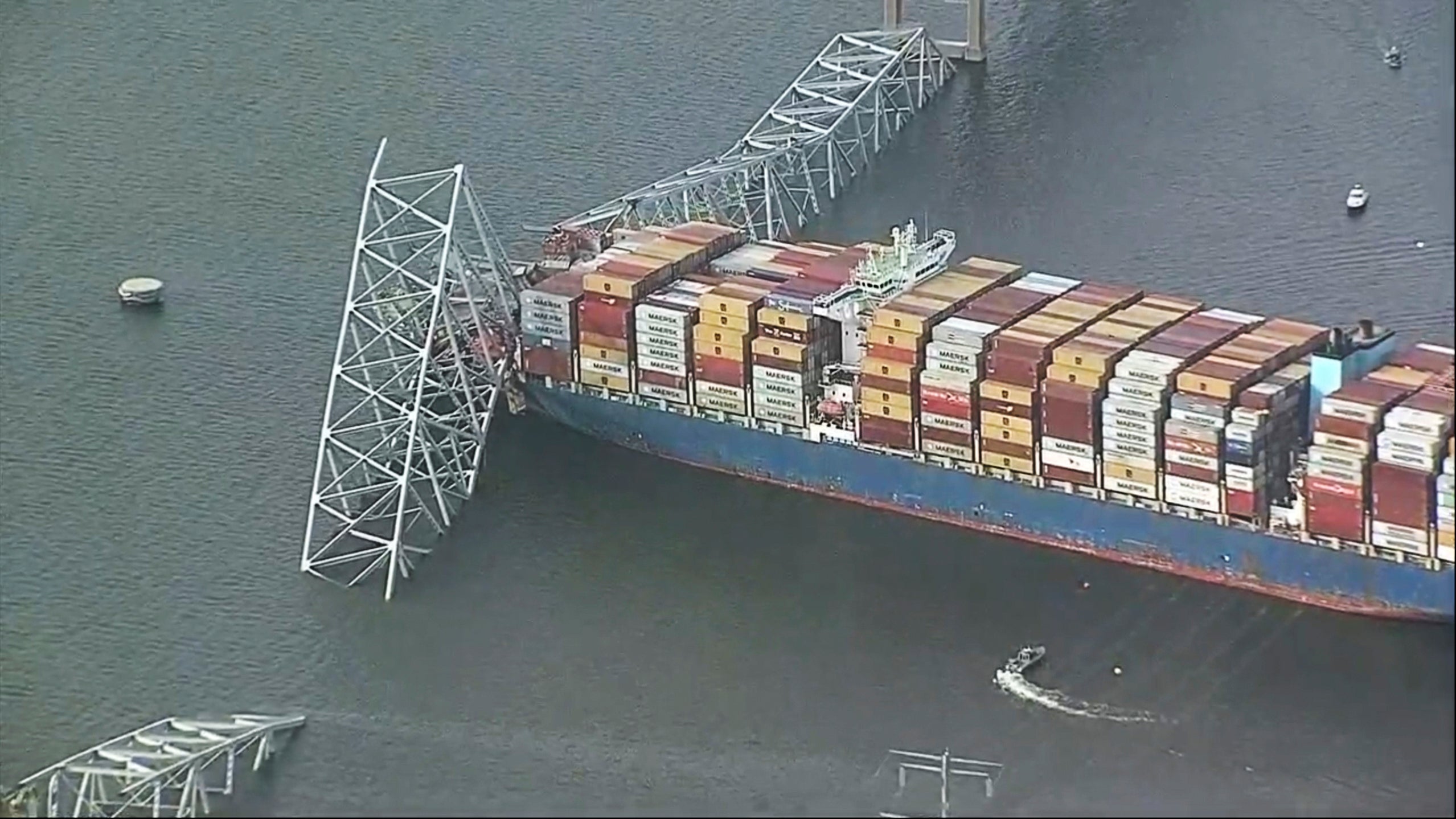Baltimore Key bridge collapse: Experts break down possible cause of deadly crash
The jaw-dropping collapse of Baltimore’s well-trafficked Francis Scott Key Bridge resulted after a rare set of circumstances — but still highlights how shipping and structural changes could save lives in the future as industries modernize, writes Sheila Flynn

Your support helps us to tell the story
From reproductive rights to climate change to Big Tech, The Independent is on the ground when the story is developing. Whether it's investigating the financials of Elon Musk's pro-Trump PAC or producing our latest documentary, 'The A Word', which shines a light on the American women fighting for reproductive rights, we know how important it is to parse out the facts from the messaging.
At such a critical moment in US history, we need reporters on the ground. Your donation allows us to keep sending journalists to speak to both sides of the story.
The Independent is trusted by Americans across the entire political spectrum. And unlike many other quality news outlets, we choose not to lock Americans out of our reporting and analysis with paywalls. We believe quality journalism should be available to everyone, paid for by those who can afford it.
Your support makes all the difference.The Dali set out from the Port of Baltimore around 1am on Tuesday, a local pilot manoeuvering the container ship towards open waters after two days in the harbour in preparation for its next sail to Sri Lanka. The 948-foot vessel edged closer to Francis Scott Key Bridge and its four lanes of I-695 over the Patapsco River; early-morning traffic was relatively light as construction crews fixed potholes on the major thoroughfare that’s served the region since 1977.
The bridge was in fair condition, according to May 2023 inspection records from the National Bridge Inventory; the construction was essentially cosmetic and the workers, presumably, immersed in routine. Then the lights of the Dali went off, on, and off again; it wasn’t long before the ship issued a mayday call and officers rushed to stop additional traffic from crossing Key bridge. The Dali, having lost propulsion and power, crashed into a bridge support buttress just before 1.30am; less than a minute later, the majority of the structure vanished beneath the surface of the Pataspco.
The collapse sounded like a crash to nearby residents; others thought it was an earthquake. But as speechless locals surveyed a scene now devoid of its landmark bridge, authorities launched a frantic recovery effort to save construction workers and motorists who’d been caught up in the accident.
And everyone began asking questions about how this could have happened.
Why did the bridge collapse?
“It was a time and place: Everything that could have went wrong did go wrong, and the place, unfortunately, was right by the bridge,” Kevin Calnan, a marine transportation professor at Cal Maritime, tells The Independent. “As far as engine failures and situations like this, it is rare. And then it’s exceptionally more rare for this to be in a port area.”

Despite the rarity of such an event, however, contributing factors may have been at play from both the bridge engineering and shipping sides, according to experts. Construction began on Key Bridge in 1972 and continued after its 1977 opening, but the size of particularly container ships has changed drastically in the intervening decades.
Calling the incident “a true tragedy,” Jerome Hajjar – professor of civil and environmental engineering at Northeastern University – said the collapse could have resulted from “a mismatch between the size of the load” on the Dali and “the expected loads at the time of the bridge design.”
The bridge supports would most likely have been designed “to be able to withstand some amount of sideways or lateral load like this,” he told Northeastern Global News.
“And therefore I would also assume that this load was significantly higher than typical design loads.”
Older bridges like this one, then, may not have sufficient pier protection cells to act as buffers, essentially stopping any colliding forces from directly making impact with support structures, which are not built to withstand such tonnage, experts say.
“Regardless of what type of bridge you have, if a cargo ship hits one of the supports, and if the bridge is a multi-span, if one of the supports are gone, that bridge is going to collapse,” Atorod Azizinamini, professor of civil engineering at Florida International University, tells The Independent.
Should a bridge be able to withstand that type of impact?
“When we design a bridge, there is a very specific requirement that you have to protect the supports of the bridge against the ship colliding [with] supports,” says Azizinamini, who is also director of FIU’s Accelerated Bridge Construction University Transportation Center. “So you’ve got to remember that the cargo ships … the impact force could be in the millions of pounds. So there’s very specific requirements … you have protection cells or you build some massive structures around the bridge so that the ship doesn’t hit the support of the bridge but hits those protection cells or the massive structure.

“From what I have seen, it seems like those protection cells that were around the support were minimal,” Azizinamini says. “It doesn’t appear to be up to current codes. But it’s very early to say.”
Will this change how bridges are built and maintained?
A multitude of agencies were investigating on Tuesday, with Secretary of Transportation Pete Buttiegieg, Federal Highway Administrator Shailen Bhatt and the NTSB on site offering federal support and assistance, the FHWA told The Independent in a statement.
Azizinamini, for his part, theorizes that the NTSB report may prompt the issue of “some policy changes that maybe re-evaluate the protection structure that you have around the piers, make sure that’s up to date, and if you don’t have it, go ahead and build it.
“Many of these bridges have been built many years ago, before the current standards were in place – so they may expedite that process,” he says.
Should the ship‘s crew be held responsible?
While Azizinamini and his engineering cohort assess the collapse from a structural standpoint, the maritime community is focusing on the container ship.
“This morning, since I’m a professional mariner, my mind immediately went to: ‘What happened on the ship?’ versus ‘How can we build bridges better?’ – because one of our rules is: ‘Don’t hit things with your ship’ – a very, very simple rule,” Cal Maritime’s Calnan tells The Independent.
“So my mind kind of immediately went to, ‘Well, what happened on board?’ I want the details of the engine failure, were there any deficiencies in any of the engineering equipment that were noted before the ship even left? What happened once it did get underway?”
Has the ship Dali ever had other issues?
Tuesday’s incident wasn’t Dali’s first collision. The ship previously collided with a platform, known as a quay, while leaving the Port of Antwerp in Belgium in July 2016, according to VesselFinder. That caused significant damage to its hull, and it was docked for repairs before returning to duty.
On top of that, Dali was cited by Chilean port officials last June for a deficiency in the category of “propulsion and auxiliary machinery,” with “thermometers, gauges, etc” then listed, according to the Electronic Quality Shipping Information System (Equasis).
Dali was reinspected in September by the Coast Guard in New York, however, with no problems listed.
The shipping giant Maersk had chartered the vessel, which was carrying Maersk cargo and was being operated by Synergy Marine Group.
“We are horrified by what has happened in Baltimore, and our thoughts are with all of those affected,” Maersk said in a statement.
Calnan noted that the ship’s crew made the mayday call, adding that the loss of power clearly “wasn’t something they anticipated happening;” Maryland’s governor highlighted the importance of that emergency call and the subsequent scramble of authorities to prevent more people from crossing the bridge.
“These people are heroes,” Gov. Wes Moore said in a Tuesday morning news conference. “They saved lives last night.”
What does this mean in terms of future shipping safety?
Two construction workers survived, while authorities continued to search Tuesday for other victims in the water. It remained unclear how many vehicles had been on the bridge at the time of the collapse.
Calnan, for his part, said there’s been a noticeable and impressive shift in the shipping safety culture in recent years and awaits the results of the NTSB report to find out what happened here. Despite the tragic loss of life, he says, a disaster such as this “leads to legislators and the procedural operation of these vessels … it kind of makes all of us stand back and say: ‘All right, well, this happened, we know this, what can we do to avoid this?
“This is a culture that we’ve been doing for years and years and years in the maritime industry, in aviation, as well: Learn from mistakes. This is quite unfortunate that it happened, but as far as increasing safety in the future, it won’t be in vain.”
Join our commenting forum
Join thought-provoking conversations, follow other Independent readers and see their replies
Comments